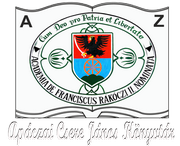Ezzel az azonosítóval hivatkozhat erre a dokumentumra forrásmegjelölésben vagy hiperhivatkozás esetén:
https://dspace.kmf.uz.ua/jspui/handle/123456789/5407Összes dokumentumadat
| DC mező | Érték | Nyelv |
|---|---|---|
| dc.contributor.author | Papp Gabriella | hu |
| dc.contributor.author | Пап Габріелла | uk |
| dc.contributor.author | Kulin Judit | hu |
| dc.contributor.author | Кулін Юдіт | en |
| dc.date.accessioned | 2025-10-09T14:15:16Z | - |
| dc.date.available | 2025-10-09T14:15:16Z | - |
| dc.date.issued | 2025 | - |
| dc.identifier.citation | In Кучінка Каталін, Тилищак Олександр та ін. (ред. кол.): Інноваційні цифрові методи в галузі освіти та досліджень. Міжнародна науково-практична конференція Берегове, 27-28 березня 2025 року. Збірник тез доповідей. Берегове, ЗУІ ім. Ференца Ракоці ІІ, 2025. c. 121-122. | en |
| dc.identifier.isbn | 978-617-8143-36-7 (PDF) | - |
| dc.identifier.uri | https://dspace.kmf.uz.ua/jspui/handle/123456789/5407 | - |
| dc.description.abstract | Abstract. As in other subjects, mathematics requires the measurement and summative feedback of knowledge acquired during teaching. The most widely accepted measure of mathematical understanding is the evaluation of the solution of open-ended tests, where the measure of mastery is retrieved from the correctness solution process. This generalisation is also true for higher education, but we are trying to move up the technology ladder, emphasising to students that the use of tools can be positively integrated into the educational arena. This is how we have integrated e-tests into the teaching of mathematics. According to Szekely (2014), a test is a measuring instrument that measures the psychological phenomenon to be measured on an appropriate scale [5], while Csapó (1988) summarizes the basic purpose of pedagogical tests, that they serve to provide information for the management of educational processes, and thus to help development, improvement, change [2]. Pedagogical evaluation as a teaching method provides information on the level of achievement of the objectives set [5]. Tests are most commonly used as summative assessment tools to assess whether students have achieved the learning objectives of the course [1]. To be used reliably, our e-tests must have certain properties (goodness indicators) and the tasks must be created according to the categories of a specific framework (taxonomy). Based on the literature, a test is considered just like a task sheet until it has any goodness indicators. This means that a test must be objective, i.e. relevant; it must have appropriate validity, i.e. valid; and it must have appropriate reliability, i.e. dependable, to be used for its intended purpose [3]. Reliability is quantified by the reliability coefficient, which indicates the extent to which the results obtained after multiple repetitions of the same test are identical [4]. Based on the comparisons of Demkanin et al. (2015), our research comparing several taxonomies leads us to the conclusion that each taxonomy is just a hierarchically arranged classification, and we agree with the statement that the time-honored (already revised) Bloom taxonomy seems to be the most promising [4], in which the intellectual or cognitive requirements are characterized as following a two-dimensional and hierarchical order [5]. | en |
| dc.language.iso | en | en |
| dc.publisher | ЗУІ ім. Ференца Ракоці ІІ | en |
| dc.rights | Attribution-NonCommercial-NoDerivs 3.0 United States | * |
| dc.rights.uri | http://creativecommons.org/licenses/by-nc-nd/3.0/us/ | * |
| dc.subject | mathematics | en |
| dc.subject | e-test | en |
| dc.subject | higher education | en |
| dc.title | Comparison of the reliability of e-tests in higher education of mathematics | en |
| dc.type | dc.type.conferenceAbstract | en |
| Ebben a gyűjteményben: | Innovatív digitális módszerek az oktatás és kutatás területén Kulin Judit Papp Gabriella | |
Fájlok a dokumentumban:
| Fájl | Leírás | Méret | Formátum | |
|---|---|---|---|---|
| Comparison_reliability_E_tests_higher_education_mathematics_2025.pdf | In Кучінка Каталін, Тилищак Олександр та ін. (ред. кол.): Інноваційні цифрові методи в галузі освіти та досліджень. Міжнародна науково-практична конференція Берегове, 27-28 березня 2025 року. Збірник тез доповідей. Берегове, ЗУІ ім. Ференца Ракоці ІІ, 2025. c. 121-122. | 12.26 MB | Adobe PDF | Megtekintés/Megnyitás |
This item is licensed under a Creative Commons License





